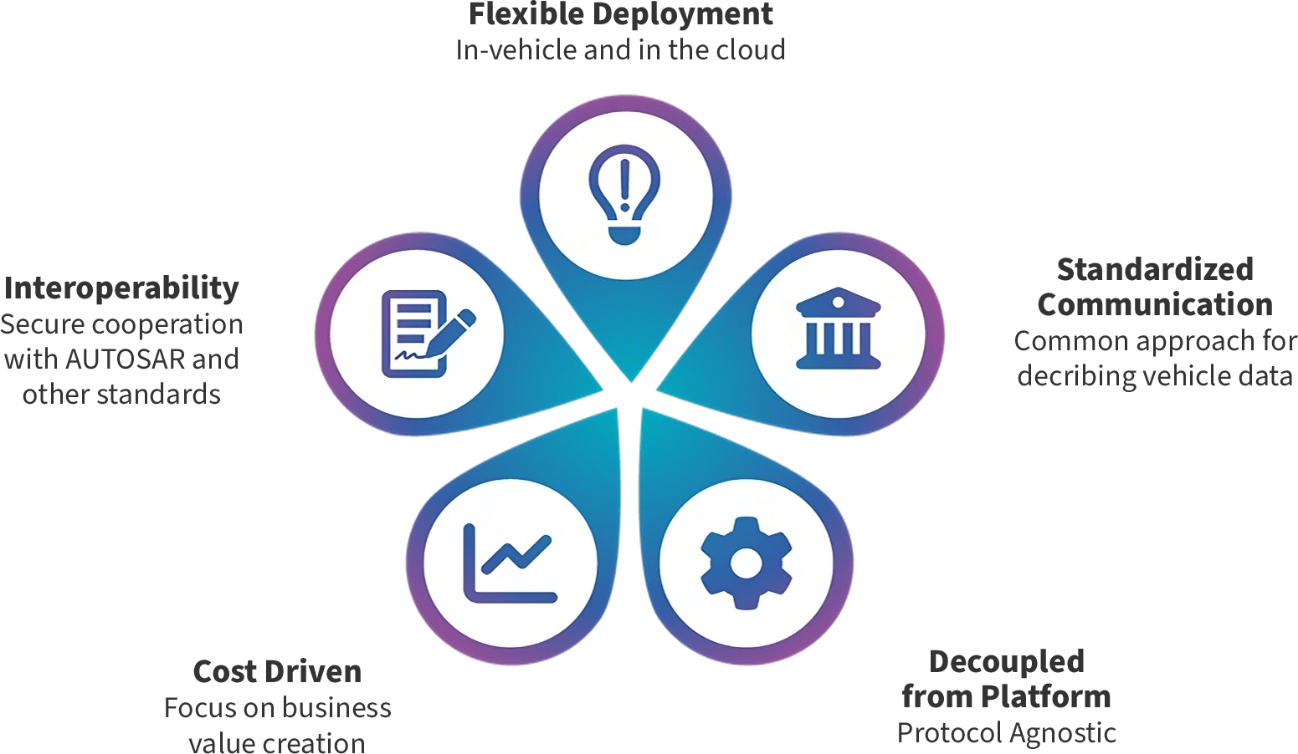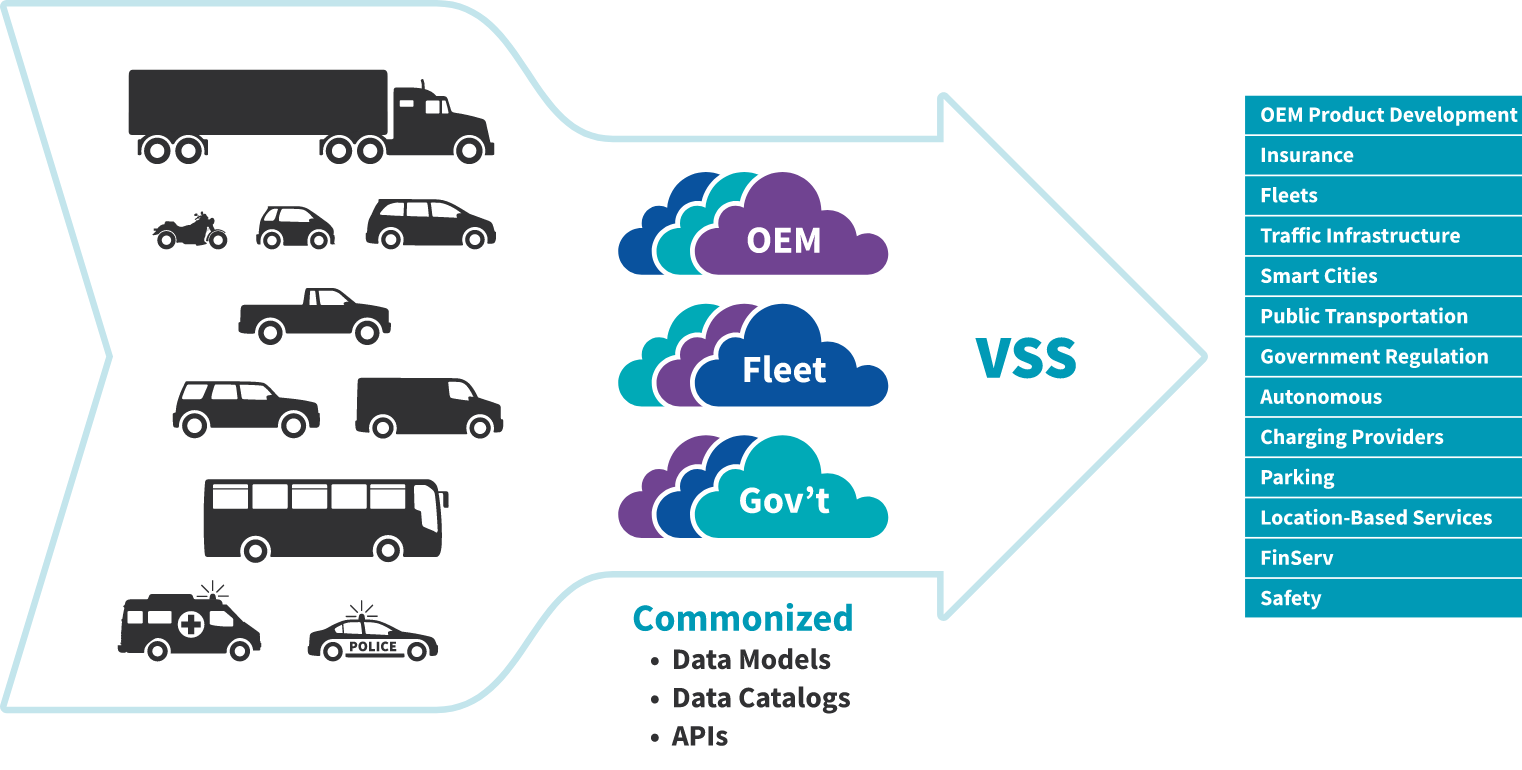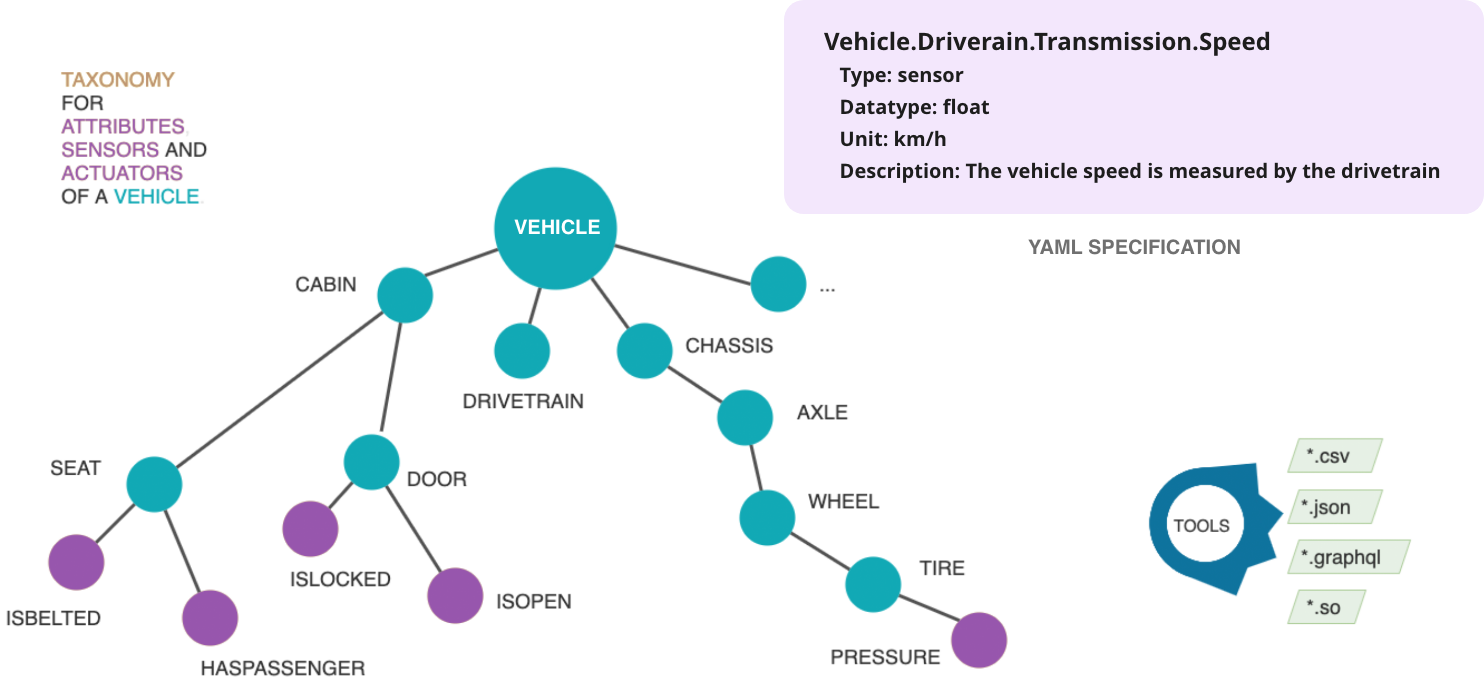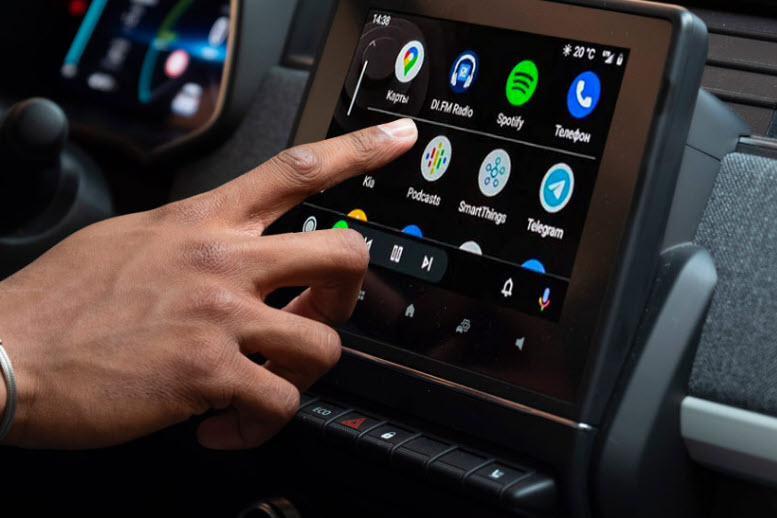Vehicle Signal Specification

What is Vehicle Signal Specification?
Vehicle Signal Specification (VSS) is a widely adopted, open data model created to consistently describe and normalize vehicle data (e.g., speed, tire pressure, interior lights, etc.). At its core, it is intended to be simple to understand and usable in a variety of contexts. Think of VSS as a common language to describe vehicle data in the vehicle and the cloud.
Key design principles of VSS:
- Simple, flexible, and easily understandable by machines and humans
- Developer-friendly and extensible with industry-supported tooling
- Support use in and out of the vehicle
- Represent the vehicle domain/perspective in multiple contexts of the mobility ecosystem
- Support a robust variety of vehicles, including consumer and commercial vehicles
- Protocol and technology agnostic

Why is VSS needed?
Consumers expect the best, safest, and problem-free content and experiences integrated into their digital world from their phones, smart home devices, computers, and electronic devices immediately as they become available. Why would they expect less from their vehicles? In the automotive industry, vehicle data is often fragmented.
To truly address the challenge of fragmented data and live up to consumers’ digital expectations, there must be a common understanding of vehicle data and interfaces between systems, in and out of the vehicle and across the broader mobility ecosystem. This common understanding of data is fundamental, foundational, and imperative to enabling great current and future digital experiences.

Embracing this need for commonality, standardized vehicle data improves interoperability and eases integration, leading to many scaling opportunities. This saves time and costs, allowing companies to focus on business value creation and differentiating solutions.
Data is a fundamental building block for enabling the Software Defined Vehicle (SDV) and connected vehicles of the future. More precisely, the common data definition as represented in VSS will reduce the many automotive data silos and enable connectivity and collaboration across the mobility data space.

Co-chair of DEG:
Erik Jägervall
Bosch
“The automotive industry is changing rapidly. Vehicle data is no longer of interest only for the OEMs but is also the foundation for many services and solutions provided by third parties. VSS gives actors in the automotive industry a mechanism to collaborate on vehicle data definition, by a common syntax for vehicle signals and a large catalog of signals. When agreeing on what vehicle data a service needs signals from the VSS catalog can be used as a reference, and the API used to exchange data may be based on VSS.”
Key Advantages
Enables Scalability
- Horizontal integration with adjacent industries leading to cross-industry solutions
- Open collaboration and interchange of software components
- Eases data aggregation and cleaning
- Faster large-scale analytics
- Sharing of sophisticated tooling
- Application and code reuse

Faster Time-to-Market
- Faster product iteration
- Highly portable solutions
- Eases testing and evaluation of new software
- Reduces vendor lock-in
- Enables on-demand, real-time consumer personalization

Supports Future Business
- Open-source collaboration leads to partnerships
- Big tech and cloud providers create new opportunities
- Increased access to normalized data leads to innovation and new opportunities

Drives Innovation
- Open-source collaboration leads to partnerships
- Big tech and cloud providers create new opportunities
- Increased access to normalized data leads to innovation and new opportunities

Enables Collaboration!
So, what is VSS exactly?
The VSS data model is a hierarchical tree structure built with modules that can be flexibly combined, as illustrated below.

This standardized data model, specification, and tooling help you simplify tens of thousands of vehicle signals into a common understanding that is protocol and technology-agnostic.
A VSS file (.vspec) is both human and machine-readable, and the available tooling supports automated conversion to the most used industry formats.

Member Contributors

Leads
BMW – Adnan Bekan
Bosch – Eric Jaegervall
Get Involved
COVESA Spotlights

Commercial fleets run on data. These fleets include a wide range of vehicle classes ranging from passenger cars, delivery vans, and heavy-duty trucks to construction equipment, and are owned and operated by a commercial entity instead of an individual....

Consumers expect the absolute best, safest, and problem-free content and experiences integrated into their digital world from their phones, smart home devices, computers, and electronic devices immediately as they become available. Why would they expect less from their vehicles? The reality today is not quite so simply in the Automotive industry and the vehicle’s data space is often messy and disconnected...

Collaboration to unify guidelines and interoperability for vehicle applications, primarily within the Android open source environment (AOSP). With mutual requirements, guidelines for APIs and reference implementations we can reduce cost and speed up time to market while enabling app developers to develop once and then easily deploy to many OEMs...
